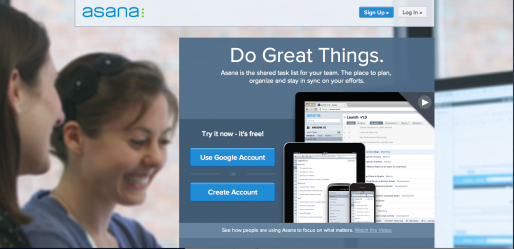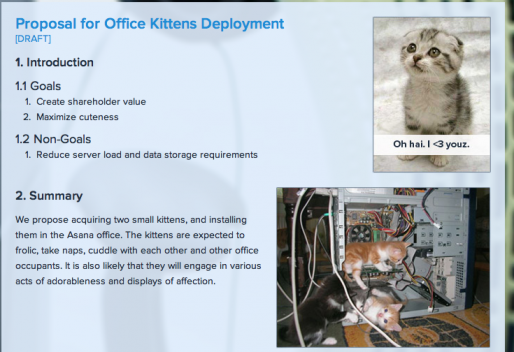Project Management is a beast under any circumstances. Try to coordinate projects involving multiple people over multiple locations and you have a recipe for a headache. There are quite a few other systems out there, most notably Basecamp (which is used by ONA). However, for the cash-strapped business or startup, free is always welcome. So when Asana launched in November 2011, I found myself checking it out.
Asana is a clean, open-source solution offering free plans for up to 30 different users. At some point, it will be offering customized licenses and the capacity for larger users, but those prices have not yet been released.
Asana allows for the creation of multiple project workspaces, so it is easy for those of us living the hyphenated life to keep all of our projects in the same place. It can also function as a customer relationship management tool, a bug tracker and candidate tracking.
The user experience is quick to set up and easy to understand – there are help videos available as well as an extensive online help forum. I was able to quickly add nine people to my project, figure out the idea of “followers” for a particular task, assign due dates, and upload relevant images and documents. Asana also boasts an email drop box functionality, where you can route certain emails directly. The tracking is valuable — now, instead of searching through tons of email, we can assign tasks directly to a certain set of people and check the progress in an instant.
The corporate blog normally covers products and projects, but there’s an interesting post on working at Asana:
You should spend part of the afternoon looking at some of the notes and projects from our recent roadmap week. We have these once every four months, where the entire company collaborates in subcommittees to discuss plans for the upcoming few months. Some subcommittees are engineering specific, like “performance” or “scalability”, some are product oriented, like “mobile” or “redesign”, and others relate to how the company is run, like “recruiting” or “marketing.” These topics change as needed and you are encouraged to involve yourself in whatever parts of planning you find interesting. Don’t feel pressured to be on too many subcommittees — we’ll have a round of presentations near the end, where we incorporate more feedback.
We plan at these intervals so we stay in sync, and can execute effectively and smoothly. Between roadmap weeks, we split our time into three week periods: two weeks of working with a small team on a specific project and one week of catching up on everything else. A lot of the requirements for each project will already have been identified during roadmap week, but it’s up to you and the rest of your team to decide the full set of tasks to be completed. For the non-project work you won’t have a set team, but you can grab anyone as needed to help you with whatever you’re doing.
It’s clear their corporate philosophy influences the design and experience. Asana feels like it is focused on getting things done — a shareable to-do list, only better.
In three weeks of testing, I encountered no major errors with Asana, no periods of downtime, and the most user-friendly help software I’ve ever seen on an open-source product. And if that wasn’t enough, feast your eyes on the cutest project ever:


